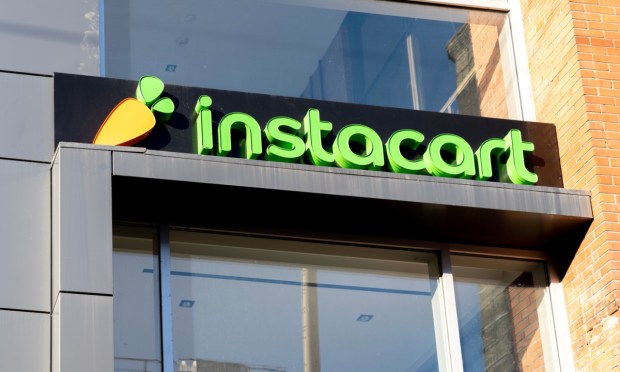Instacart Boosts in-Store Offerings in Leadup to Planned IPO

In an effort to place itself at the center of grocers’ omnichannel businesses, Instacart is boosting its in-store capabilities in advance of its planned initial public offering (IPO).
Announced in a Thursday (Sep. 7) press release, the new features include the option for grocers to provide an “In-Store mode” on their white-label apps, offering consumers a shopping list-building tool, store navigation assistance and information about stock levels, nutrition information, benefits eligibility and deals.
Additionally, the grocer is equipping its Caper Cart self-checkout smart shopping carts with rewards-earning capabilities and with the ability to purchase made-to-order items from the devices’ screens.
“Omnichannel customers are more valuable to retailers, and because grocery is the largest, most complex retail category, it’s critically important that grocers have a technology partner that understands their industry and the unique challenges they face,” the company stated in the news release.
These moves to expand the aggregator’s in-store offerings come as the company gears up to set its initial public offering (IPO) price range, possibly doing so as soon as Monday (Sep. 11), per a recent report. In this leadup, the aggregator is positioning its in-store technologies as a key advantage.
“Instacart helps retailers create a unified, seamless, and personalized experience both online and in-store and provides technologies that enhance in-store operations,” the company stated in its Form S-1 with the Securities and Exchange Commission (SEC) for its proposed IPO. “Tens of thousands of our retail partners’ store associates use various Instacart in-store tools. … Our omni-channel offerings are important to retailers as third-party data shows that customers who shop online and in-store spend two to four times more than in-store customers.”
PYMNTS’ Karen Webster noted in a recent feature how upgrades such as these just-announced capabilities — ones that connect consumers’ in-store behaviors to a digital profile — can help Instacart place itself at the center of the omnichannel grocery experience.
“Although not yet at scale — and not yet at the level of a biometric identity a la the Amazon Palm Pay experience — log in with Instacart at the grocery store could be a first step in the direction of giving consumers a cross-channel, personalized online grocery identity,” Webster observed.
Indeed, focusing on the brick-and-mortar experience is key, as the majority of grocery purchases continue to occur in stores. PYMNTS Intelligence from the report “Tracking the Digital Payments Takeover: Catching the Coming eCommerce Wave,” created in collaboration with Amazon Web Services (AWS), for which we surveyed nearly 2,700 U.S. consumers in April, showed that only 12% of grocery orders occur via digital channels.
Yet even brick-and-mortar shoppers expect digital convenience. For instance, PYMNTS’ study “Big Retail’s Innovation Mandate: Convenience and Personalization,” created in collaboration with ACI Worldwide, which draws from a survey of 300 retailers across the United States and the United Kingdom, finds that 79% of grocers think consumers would be very or extremely likely to switch merchants if not offered the ability to use mobile apps in stores, and 68% said the same of alternative payment methods.

